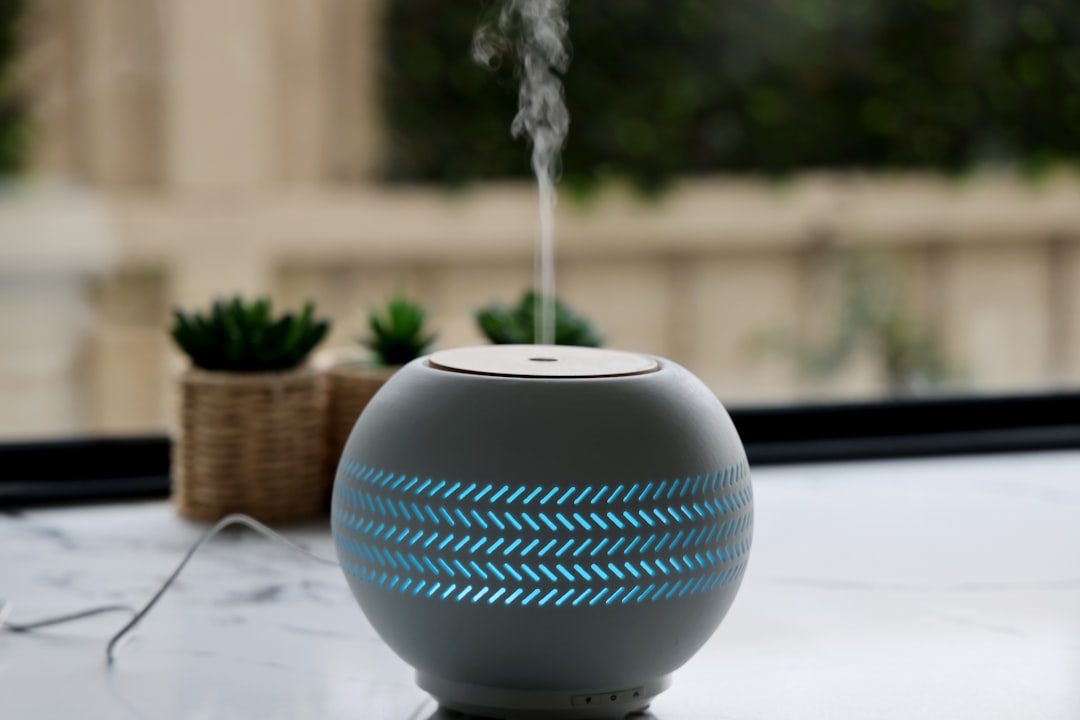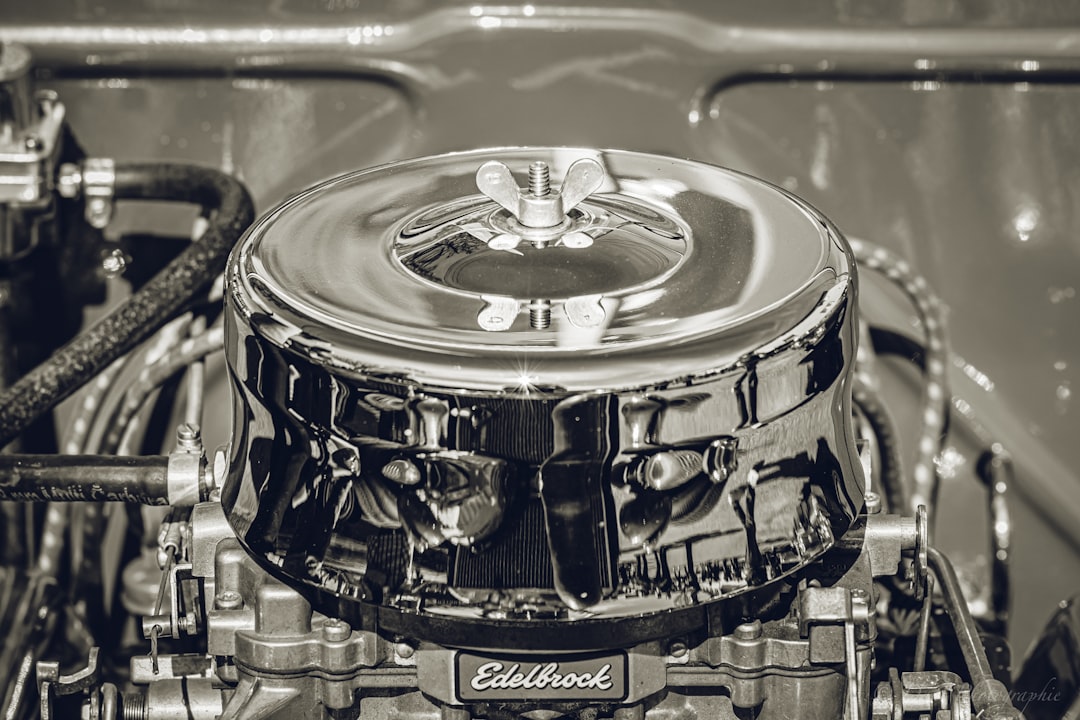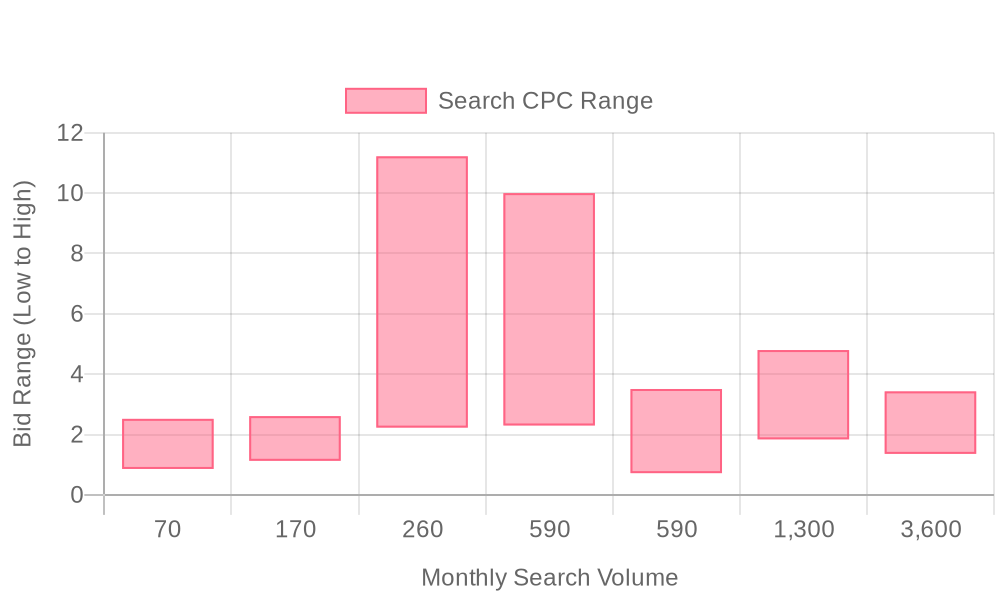
Supercharge your lead generation with a FREE Google Ads audit - no strings attached! See how you can generate more and higher quality leads
Get My Free Google Ads AuditFree consultation

No commitment
Supercharge your lead generation with a FREE LinkedIn Ads audit - no strings attached! See how you can generate more and higher quality leads
Get My Free Google Ads AuditFree consultation

No commitment
Supercharge your lead generation with a FREE Meta Ads audit - no strings attached! See how you can generate more and higher quality leads
Get My Free Google Ads AuditGet My Free LinkedIn Ads AuditGet My Free Meta Ads AuditFree consultation

No commitment
Supercharge your lead generation with a FREE Google Ads audit - no strings attached! See how you can generate more and higher quality leads
Get My Free Google Ads AuditFree consultation

No commitment
In today's complex marketing landscape, effective B2B marketing requires a strategic mix of both online and offline channels working in concert. Within this integrated ecosystem, Google Ads plays a critical middle-funnel role by capturing high-intent prospects at the exact moment they're searching for solutions—effectively bridging the gap between broader awareness efforts and your sales process. For air purification companies, understanding and solving the challenge of missing high-value prospects is crucial. Modern solutions now allow businesses to recognize potential leads who have yet to signal intent through traditional methods, therefore making it possible to intercept decision-makers at their precise moment of need. Targeting with precision based on technical specifications unique to your industry, while measuring ROI from click to deal closure, changes the way opportunities are captured.

B2B marketers and local air purification providers require more than generic outreach to build a sustainable pipeline. Successful lead generation in this industry hinges on surfacing in-market buyers and capturing their attention with relevant messaging at the right moment. To further enhance your strategy, explore comprehensive Google Ads tactics for air duct cleaning businesses that can be adapted to air purification services.
A unified digital approach lets businesses identify high-intent prospects, personalize creative, and optimize every dollar spent. Google Ads, when strategically integrated with advanced data and attribution tools, empowers air purification companies to target, engage, and convert leads that drive measurable revenue impact.

Step 1: Build Targeted Keyword Lists
Begin by identifying keywords that align with buyer intent and industry-specific pain points. Use a blend of short-tail commercial terms and long-tail solution-based phrases such as "office air filtration system" or "air purifier for mold." Integrate negative keywords like "DIY," "repair," or unrelated product types to exclude unqualified clicks. With advanced visitor identification, you can move beyond anonymized traffic and pinpoint which companies are searching for your solutions, increasing targeting precision.
Step 2: Define Precise Audience Segments
Segment your audiences based on factors like company size, geographic region, job function, or past interaction history. Dynamic audience building allows for real-time updates as leads progress from initial research to purchase readiness. Leveraging in-market behavioral signals helps shift budget and messaging towards high-converting segments, ensuring resources focus on accounts showing the strongest buying intent.
Step 3: Align Creative and Landing Pages
Design ad copy and landing pages that address specific buyer concerns: health impact, regulatory compliance, or operational efficiency. Benefit-driven messaging, such as "Eliminate allergens fast" or "Meet new indoor air quality standards," resonates with decision-makers. For tips on crafting compelling ad content, check out this step-by-step ad copywriting guide. Ensure creative assets reflect the language and priorities of both technical buyers and facilities managers. Landing pages should reinforce ad promises, streamline conversion actions, and deliver a frictionless mobile experience.
Step 4: Set Up Conversion Tracking and Attribution
Implement robust conversion tracking and attribution to capture both online and offline actions: form fills, phone inquiries, demo requests, or in-person appointments. Advanced attribution models connect ad spend to closed revenue, revealing which keywords and campaigns drive true ROI. Integration with your CRM lets enriched audience segments and lead data sync directly into Google Ads, providing a feedback loop for continuous optimization.
Step 5: Activate Cross-Channel Nurture and Retargeting
Deploy remarketing and nurture campaigns to re-engage visitors who have shown interest but not yet converted. Dynamic audience lists ensure that as leads move through the funnel—downloading a whitepaper or requesting a quote—they receive personalized follow-up ads. This approach maximizes touchpoints and keeps your brand top-of-mind during the complex decision process typical of air purification investments.
Step 6: Optimize, Analyze, and Expand
Continuously monitor performance metrics like click-through rates, cost per lead, and pipeline attribution. Use A/B testing to refine ad copy, creative, and bidding strategies. By analyzing both Google Ads and CRM data, you can identify which segments are most profitable, adjust budget allocations, and expand into new geographies or verticals with confidence in projected ROI. Get started for free with Sona.

Air purification companies operate in a market where timing and precision are crucial for converting commercial buyers. Decision-makers such as plant managers and procurement heads often search for solutions at the moment a need arises, especially during pollution spikes or urgent compliance requirements. Google Ads empowers these businesses to intercept prospects when their intent is highest, ensuring that every impression and click aligns with real purchase potential. For a step-by-step approach to campaign setup and optimization in this niche, see this comprehensive guide to Google Ads for air duct cleaning.
Immediate engagement is necessary in this sector because delayed follow-ups can lead to missed opportunities or competitors winning the deal. Well-structured Google Ads campaigns enable air purification providers to deliver targeted messaging directly to in-market buyers, capturing attention during critical windows—such as high pollution alerts, seasonal demand surges, or emergency facility upgrades. This channel also allows for granular control over spend and targeting, letting marketers prioritize local advertising for air purification, focus on high-value commercial projects, and adapt to shifting market signals for maximum impact.
By leveraging actionable data, companies can build campaigns that not only drive clicks but also deliver measurable ROI. When marketers connect Sona’s Audiences tool with enriched CRM insights, they gain the ability to pinpoint previously anonymous site visitors and companies, shifting budget toward high-converting accounts. This unified approach to PPC for air purification ensures that every advertising dollar is spent reaching the right person at the optimal moment, transforming online advertising for air purification into a consistent lead generation engine. To experience the benefits firsthand, get started for free with Sona.

To unlock more advanced segmenting, audience targeting, and campaign optimization, get started for free with Sona.
Air purification companies can accelerate growth by expanding their keyword targeting beyond generic terms and embracing vertical keyword strategies specific to specialty services. By focusing on search behaviors tied to unique air quality concerns, allergy triggers, or commercial purification needs, revenue teams uncover valuable intent signals that are often overlooked in standard campaign approaches.
Competitor gap analysis remains crucial for identifying underserved market segments. Reviewing paid search landscapes and evaluating where competitors underinvest exposes opportunities to introduce new products or emphasize differentiators, such as advanced HEPA technology or smart monitoring features. This method helps marketers efficiently allocate budget to areas with lower competition and higher conversion potential. For a step-by-step approach to creating effective campaigns in this space, see this HVAC Google Ads guide.
Industry-specific placements and targeted content retargeting add another layer of engagement. Distributing educational content, such as case studies on improved indoor air quality or guides to selecting the right purifier for specific spaces, helps move prospects through the funnel. Integrating real-time audience segmentation ensures air purification brands can continue to engage high-value accounts as their needs shift, aligning campaign outreach with the broader objectives of B2B lead generation and long-term customer lifetime value. Unifying website visitor identification and CRM data makes it possible to pinpoint decision-makers and sync enriched audiences back into Google Ads, driving more relevant retargeting and stronger ROI. Ready to put these strategies into action? Get started for free with Sona.

Precise audience segmentation is the foundation of effective digital marketing for air purification companies. By grouping prospects according to their intent signals and stage in the buying journey, teams can deliver messaging that addresses specific pain points and motivations, which is critical in a competitive, need-driven market.
Segmenting audiences for air purification allows marketers to streamline their paid media investment, ensuring that each campaign aligns with real customer journeys. Instead of sending generic ads to broad groups, segmenting by funnel stage—such as awareness, consideration, and decision—enables the creation of tailored ad groups that resonate with unique needs, whether that is alleviating allergy concerns, responding to local air quality alerts, or highlighting commercial-grade solutions for facilities managers. For a step-by-step approach to Google Ads campaign setup, see this comprehensive guide to using Google Ads for air duct cleaning businesses.
Audience segmentation for air purification unlocks more efficient spend, higher engagement, and true alignment between marketing and sales objectives. With a connected approach, companies can respond to market shifts in real time, provide relevant offers, and build lasting customer relationships that drive both near-term revenue and long-term brand loyalty. Ready to activate smarter segmentation? Get started for free with Sona.

| Industry | Keyword | Monthly Search Volume | Competition Level | Low Bid | High Bid |
| Air Purification Companies | top air purifier brands | 70 | HIGH | 0.86 | 2.52 |
| Air Purification Companies | best brand air purifier | 170 | HIGH | 1.13 | 2.61 |
| Air Purification Companies | air purifier companies | 260 | LOW | 2.23 | 11.22 |
| Air Purification Companies | air purification companies | 590 | LOW | 2.3 | 10 |
| Air Purification Companies | air purifier brands | 590 | HIGH | 0.72 | 3.51 |
| Air Purification Companies | air purifier manufacturers | 1300 | LOW | 1.84 | 4.8 |
| Air Purification Companies | best air purifiers for smoke | 3600 | HIGH | 1.36 | 3.43 |
Strategic keyword targeting forms the backbone of successful Google Ads for Air Purification Companies, fueling both lead generation and measurable ROI. By intercepting high-intent searchers at the exact moment of need, companies can maximize conversions while ensuring every ad dollar supports business growth. For actionable keyword research, explore this list of high-performing keywords for home appliances to jumpstart your campaign planning.
A data-driven keyword strategy starts with identifying the terms that indicate purchase readiness or urgent problem-solving. Target phrases like “air purifier installation services,” “clean air solutions near me,” and “commercial air filtration contractors” attract buyers actively seeking a provider. Layering in long-tail variations such as “HEPA filter office installation,” “allergy relief air purifier for schools,” and “emergency air purification repair” enhances reach and relevance. These terms capture both B2C and B2B demand, allowing campaigns to address residential, commercial, and institutional segments. For more campaign-building tactics, browse our collection of actionable playbooks.
Dynamic keyword management ensures campaigns stay aligned with evolving search behaviors and market needs. Leveraging real-time intent signals, revenue teams can prioritize budget toward keywords driving calls, form fills, or demo requests from in-market accounts. Sona’s unified data approach enhances this process by linking keyword triggers to known visitor profiles, enabling marketers to attribute conversions to specific terms and refine bidding strategies accordingly. This closed-loop feedback supports continuous improvement, as enriched audience insights and conversion data flow seamlessly into campaign management and CRM platforms.
Granular segmentation by keyword theme also supports personalized messaging and improved lead quality. For example:
For further tips on segmenting by buying stage and maximizing conversion rates, see our buying stage segmentation playbook.
Integrating these keyword clusters with offline conversion tracking allows companies to measure true ROI from both digital and phone-based leads. As audience lists dynamically update based on search activity and funnel progression, advertising teams can target returning website visitors or high-value accounts with tailored offers, retargeting, and upsell campaigns. To experience seamless keyword and audience integration, get started for free with Sona and drive higher revenue outcomes for your air purification business.

Precision in keyword selection shapes the foundation for every successful Google Ads initiative in the air purification industry. Start by mapping out core commercial intent terms such as “professional air purification,” “office air quality solutions,” and “residential HEPA filter installation.” Expand into long-tail modifiers like “allergy air purifier for offices” or “pet dander air cleaner for schools” to capture high-intent, low-competition traffic. Segmenting by use case, location, and buyer persona allows for nuanced targeting that closely aligns with real-world demand cycles. For a comprehensive list of high-performing terms, explore these home appliances keywords.
Modern platforms now allow marketers to go beyond static keyword lists. By integrating visitor identification and intent data, revenue teams can uncover which companies or decision-makers are actively researching air purification solutions. This intelligence enables dynamic keyword prioritization, real-time budget allocation, and immediate exclusion of irrelevant queries. For more on building advanced keyword strategies, review our B2B marketing playbooks. With each campaign, the keyword universe becomes more refined and actionable, resulting in more qualified leads and less wasted spend.
Ad copy must resonate with the unique needs and pain points of air purification customers—health concerns, compliance requirements, and operational efficiency. Use clear, benefit-driven language: highlight the impact on indoor air quality, allergy relief, and regulatory adherence. Phrases like “Eliminate 99.9% of airborne pathogens” and “Improve employee well-being with certified air filtration” address both emotional and rational buyer triggers. Tailor messaging for segmented audiences, such as parents, facility managers, or business owners. To improve your messaging, check out this step-by-step guide to writing ad copy that converts.
Leverage real-time behavioral signals to personalize ad copy further. When platforms detect that a target account is researching compliance or has visited a case study, ads can automatically shift to emphasize relevant certifications or proven ROI. This dynamic approach improves engagement, shortens sales cycles, and keeps ad messaging fresh for repeat visitors. As audience data syncs seamlessly from your content and CRM systems, every impression is aligned with the prospect’s current buying stage and needs.
Landing pages for air purification campaigns must go beyond generic product showcases. Use visual storytelling—before-and-after air quality metrics, interactive ROI calculators, and testimonials from similar businesses—to build trust and credibility. Prioritize mobile-first layouts, fast loading times, and simple navigation so prospects can convert with minimal friction. Every page element, from headlines to form fields, should reinforce the unique value of your air purification solutions. For best practices on maximizing air purifier efficiency for your audience, reference these air purifier best practices.
Integrating CRM and ad platforms ensures that landing page experiences are tailored for each visitor. When a returning lead from a target account lands on the site, the page can adapt content to reflect their previous interactions or interests, such as displaying enterprise pricing for facility managers or offering instant demo scheduling for decision-makers. This level of personalization drives higher conversion rates and more accurate attribution for every lead captured.
Continuous optimization is essential in the fast-moving air purification market. Monitor performance across core metrics—impressions, click-through rates, cost per lead, and pipeline velocity—to identify areas for improvement. Use A/B testing to refine headlines, calls-to-action, and visual elements, ensuring that campaigns remain aligned with shifting industry trends and prospect expectations. Benchmark your results against industry standards with this Google Ads benchmarks report.
Advanced platforms enable attribution across both online and offline touchpoints. This means revenue teams can measure the true ROI of their PPC for air purification spend, connecting Google Ads clicks to CRM-recorded deals, phone calls, or in-person appointments. Real-time audience syncing ensures that ads target only active, high-intent buyers, while cold or closed accounts are automatically excluded. As data layers unify, every optimization becomes more strategic, driving sustained improvements in Google Ads ROI and accelerating lead generation for air purification companies. Ready to optimize your campaigns? Get started for free with Sona.
Expanding your air purification brand requires more than product listings and sporadic ad placements. Industry leaders drive consistent growth by merging paid and owned assets into unified, insight-driven campaigns that maximize visibility and engagement—explore our B2B marketing insights for actionable strategies.
To break down data silos, cross-promote high-value educational content through retargeting, ensuring that audiences who interact with guides or webinars continue to see relevant offers and resources across channels. By leveraging real-time audience segments, you can upsell related services—such as filter replacement plans or in-home air quality assessments—timing each message to the prospect’s demonstrated interest and lifecycle stage. For a comprehensive guide to campaign setup and optimization, review this Google Ads for air duct cleaning resource.
Partnering with industry associations and local health organizations strengthens credibility, tapping into established trust networks. When your campaigns sync CRM and ad platform data, you can identify which association partnerships or co-branded educational assets drive the highest-quality engagement and leads, allowing for smarter budget allocation toward the most impactful initiatives. Localized content, informed by both search query trends and real-time visitor identification, enables you to address specific air quality concerns in target regions—reinforcing your brand’s position as an authority and solution provider.
Continual analysis of search query data uncovers emerging topics and unmet information needs. Feeding these insights into your content strategy allows your team to develop new educational resources that resonate with in-market audiences, further boosting organic and paid campaign effectiveness. Enhanced attribution connects online ad interactions with offline conversions—such as booked consultations or equipment installations—providing a comprehensive view of marketing ROI and enabling precise optimization for lead generation and sales growth. If you’re ready to unify your marketing and sales data for smarter growth, get started for free with Sona.
In conclusion, effectively leveraging Google Ads can be a game-changer for air purification companies looking to enhance their online presence and drive business growth. By understanding the intricacies of targeted advertising, businesses can reach potential customers precisely when they are searching for air purification solutions, resulting in increased leads and sales.
Throughout this article, we've explored the critical challenges air purification companies face in digital marketing. These include creating compelling ad content, selecting appropriate keywords, and optimizing campaign performance. Implementing the strategies discussed, such as audience segmentation and continuous performance analysis, can significantly enhance your advertising efforts.
The possibility of transforming your digital marketing approach is within reach. With the right tools and strategies, your air purification business can capture the attention of potential clients, establish a strong market presence, and ultimately achieve your sales objectives. The journey to mastering Google Ads may seem daunting, but with dedication and the right insights, success is certainly attainable.
To elevate your marketing strategy and experience innovative solutions firsthand, start for free to explore our platform's capabilities. Uncover actionable insights and drive meaningful results in your advertising campaigns today.
The best strategies include targeting high-intent keywords, using search and display campaigns, leveraging video and remarketing campaigns, and integrating advanced data tools for precise audience targeting and ROI measurement.
Air purification companies can optimize by building targeted keyword lists, defining precise audience segments, aligning creative and landing pages, setting up conversion tracking, and continuously analyzing and adjusting campaigns based on performance metrics.
While the article does not specify an exact budget, it emphasizes the importance of targeting high-intent prospects and using data-driven insights to allocate budgets towards campaigns and keywords that show the strongest buying signals and conversion potential.
Yes, Google Ads are effective for lead generation in the air purification industry as they allow companies to capture high-intent prospects searching for solutions, ensuring that every impression and click aligns with real purchase potential.
Companies should target keywords indicating purchase readiness and urgent problem-solving, such as 'air purifier installation services,' 'clean air solutions near me,' and 'commercial air filtration contractors,' along with long-tail variations for specific needs.
Join results-focused teams combining Sona Platform automation with advanced Google Ads strategies to scale lead generation

Connect your existing CRM

Free Account Enrichment

No setup fees
No commitment required

Free consultation

Get a custom Google Ads roadmap for your business
Join results-focused teams combining Sona Platform automation with advanced Meta Ads strategies to scale lead generation

Connect your existing CRM

Free Account Enrichment

No setup fees
No commitment required

Free consultation

Get a custom Google Ads roadmap for your business
Join results-focused teams combining Sona Platform automation with advanced LinkedIn Ads strategies to scale lead generation

Connect your existing CRM

Free Account Enrichment

No setup fees
No commitment required

Free consultation

Get a custom Google Ads roadmap for your business
Join results-focused teams using Sona Platform automation to activate unified sales and marketing data, maximize ROI on marketing investments, and drive measurable growth

Connect your existing CRM

Free Account Enrichment

No setup fees
No commitment required

Free consultation

Get a custom Google Ads roadmap for your business
Over 500+ auto detailing businesses trust our platform to grow their revenue
Join results-focused teams using Sona Platform automation to activate unified sales and marketing data, maximize ROI on marketing investments, and drive measurable growth

Connect your existing CRM

Free Account Enrichment

No setup fees
No commitment required

Free consultation

Get a custom Google Ads roadmap for your business
Over 500+ auto detailing businesses trust our platform to grow their revenue
Join results-focused teams using Sona Platform automation to activate unified sales and marketing data, maximize ROI on marketing investments, and drive measurable growth

Connect your existing CRM

Free Account Enrichment

No setup fees
No commitment required

Free consultation

Get a custom Google Ads roadmap for your business
Over 500+ auto detailing businesses trust our platform to grow their revenue
Our team of experts can implement your Google Ads campaigns, then show you how Sona helps you manage exceptional campaign performance and sales.
Schedule your FREE 15-minute strategy sessionOur team of experts can implement your Meta Ads campaigns, then show you how Sona helps you manage exceptional campaign performance and sales.
Schedule your FREE 15-minute strategy sessionOur team of experts can implement your LinkedIn Ads campaigns, then show you how Sona helps you manage exceptional campaign performance and sales.
Schedule your FREE 15-minute strategy sessionOur team of experts can help improve your demand generation strategy, and can show you how advanced attribution and data activation can help you realize more opportunities and improve sales performance.
Schedule your FREE 30-minute strategy sessionOur team of experts can help improve your demand generation strategy, and can show you how advanced attribution and data activation can help you realize more opportunities and improve sales performance.
Schedule your FREE 30-minute strategy sessionOur team of experts can help improve your demand generation strategy, and can show you how advanced attribution and data activation can help you realize more opportunities and improve sales performance.
Schedule your FREE 30-minute strategy sessionOur team of experts can help improve your demand generation strategy, and can show you how advanced attribution and data activation can help you realize more opportunities and improve sales performance.
Schedule your FREE 30-minute strategy session





Launch campaigns that generate qualified leads in 30 days or less.
